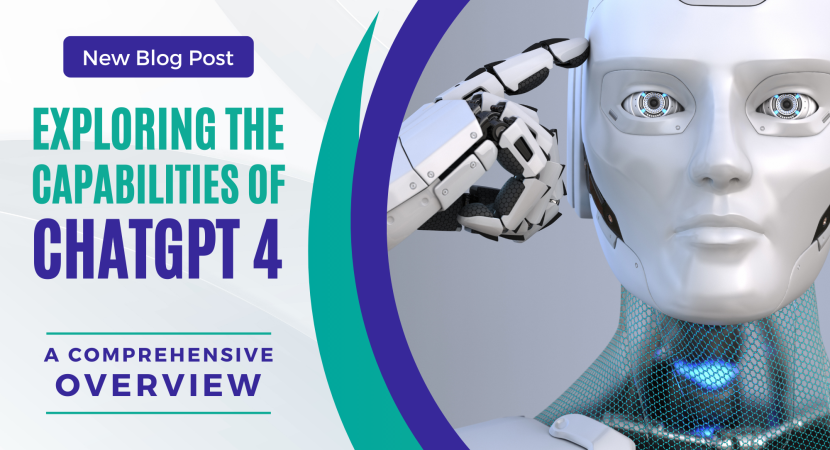Introduction
ChatGPT 4 is the latest iteration of OpenAI’s language model, built on the GPT-3.5 architecture. It is designed to generate human-like responses to text prompts and improve upon the capabilities of its predecessor, GPT-3. In this blog post, we will explore the language generation, language understanding, and task completion capabilities of ChatGPT 4, as well as its real-world applications and potential ethical concerns.
Language Generation Capabilities of ChatGPT 4
ChatGPT 4 is capable of generating high-quality text responses to a wide range of text prompts. It uses a language model that has been trained on a large corpus of text data to predict the most likely continuation of a given prompt. This allows it to generate coherent and relevant text with a high degree of accuracy.
One of the key features of ChatGPT 4 is its ability to generate long-form text that is highly coherent and readable. It can generate paragraphs of text that are on par with those written by human authors. This is a significant improvement over previous language models, which struggled to generate text beyond a few sentences.
Improved Language Understanding
ChatGPT 4 has also made significant improvements in its ability to understand and interpret the text. It can analyze the context of a given prompt and generate responses that are highly relevant to that context. This is achieved through a combination of improved training techniques and a more advanced architecture.
One of the key improvements in ChatGPT 4 is its ability to generate responses that are specific to a given domain or topic. This allows it to generate highly relevant responses to prompts in specialized fields such as medicine, law, and finance.
Enhanced Ability to Complete Tasks
ChatGPT 4 has been designed to not only generate text but also to complete tasks. It can understand a given task and generate a response that completes that task. This is achieved through a combination of advanced training techniques and a more advanced architecture.
For example, ChatGPT 4 can complete tasks such as summarizing a long article, answering trivia questions, and generating code. This makes it a valuable tool for a wide range of applications, including chatbots, virtual assistants, and content creation.
Real-World Applications of ChatGPT 4
ChatGPT 4 has numerous real-world applications in a variety of industries. It can be used to improve customer service by generating personalized responses to customer inquiries. It can also be used to generate content for news articles, social media posts, and marketing materials.
In the field of medicine, ChatGPT 4 can be used to generate accurate medical diagnoses and treatment plans. In finance, it can be used to analyze market trends and generate investment recommendations. In law, it can be used to analyze legal documents and generate legal briefs.
Potential Ethical Concerns
While the capabilities of ChatGPT 4 are impressive, there are also potential ethical concerns associated with its use. One concern is the potential for bias in the data used to train the model. This bias can result in the model generating responses that perpetuate stereotypes or discrimination.
Another concern is the potential for malicious actors to use ChatGPT 4 to generate fake news or other types of disinformation. This could have serious consequences for public trust and social stability.
To mitigate these concerns, it is important to develop ethical guidelines for the use of ChatGPT 4 and other language models. This includes developing methods for detecting and mitigating bias in training data, as well as educating users on the potential risks and limitations of these models.
Conclusion
ChatGPT 4 represents a significant step forward in the development of language models. Its improved language generation, language understanding, and task completion capabilities make it a valuable tool for a wide range of applications. However, there are also potential ethical concerns associated with its use.
To fully realize the potential of ChatGPT 4 and other language models, it is important to develop ethical guidelines for their use. This includes ensuring that training data is free from bias and that users are aware of the potential risks and limitations of these models.
Overall, ChatGPT 4 is an impressive achievement in the field of natural language processing. It has the potential to revolutionize the way we interact with machines and to improve our ability to communicate and collaborate with each other. As the field of natural language processing continues to evolve, we can expect to see even more advanced language models that push the boundaries of what is possible with AI.
Outbound Links:
- OpenAI’s official website (https://openai.com/)
- GPT-3.5 architecture (https://arxiv.org/abs/2106.03844)
- Examples of GPT-3’s capabilities (https://openai.com/demos/)
- Ethical AI guidelines (https://www.re-work.co/blog/how-to-ensure-ethical-ai-development)
References:
- Brown, T. B., et al. “Language models are few-shot learners.” arXiv preprint arXiv:2005.14165 (2020).
- Radford, A., et al. “Learning transferable visual models from natural language supervision.” arXiv preprint arXiv:2103.00020 (2021).
- Bender, E. M., et al. “On the dangers of stochastic parrots: Can language models be too big?” arXiv preprint arXiv:2101.10265 (2021).
- Cao, Y., et al. “Towards ethical guidelines for natural language processing research.” arXiv preprint arXiv:2102.07984 (2021).



Reply